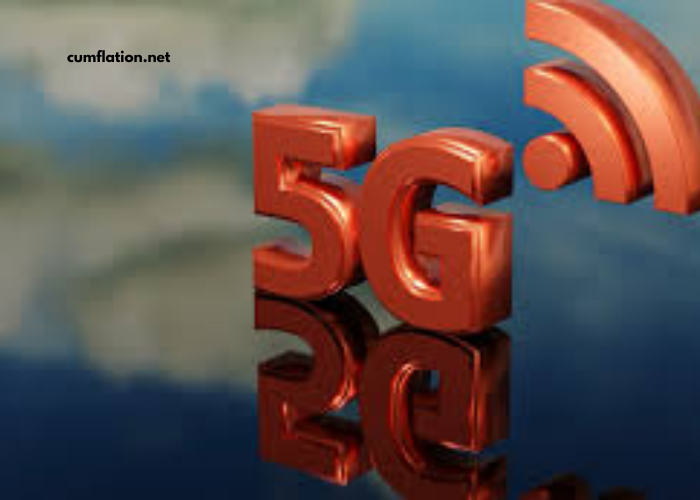
The world is on the cusp of a technological revolution with the advent of 5G technology. As the fifth generation of wireless networks, 5G promises to bring faster speeds, lower latency, and the ability to connect more devices simultaneously, which could transform entire industries. The potential of 5G is far-reaching, influencing everything from smart cities to the way businesses operate. This article explores how 5G will impact technology and business growth, delving into its implications for various sectors, the opportunities it creates, and the challenges it presents.
What is 5G and Why Does it Matter?
5G is the next step in mobile network evolution, following 4G LTE (Long-Term Evolution). It is designed to deliver significantly faster internet speeds, lower latency (reduced delay in communication between devices), and a greater number of connected devices per square kilometer. With a theoretical maximum speed of 10 gigabits per second (Gbps), 5G is up to 100 times faster than 4G, making it a game-changer for industries relying on real-time data and high-speed communication.
In essence, 5G is not just about faster mobile internet. It has the potential to enable technologies like the Internet of Things (IoT), autonomous vehicles, smart cities, and advanced industrial automation. By enabling these innovations, 5G is set to play a pivotal role in shaping the future of technology and business.
The Technological Benefits of 5G
Faster Speeds and Improved Connectivity
The most obvious benefit of 5G is its speed. Current 4G networks can offer speeds of up to 100 Mbps, but 5G is capable of speeds up to 10 Gbps under optimal conditions. These ultra-fast speeds will significantly improve mobile experiences for consumers, making activities like streaming high-definition videos, downloading large files, and engaging in augmented and virtual reality applications smoother and more efficient.
Moreover, 5G will provide more stable and reliable connectivity, even in crowded areas where previous networks struggled with congestion. This improvement will not only benefit individual users but also businesses that rely on constant communication and data flow to function effectively.
Lower Latency and Real-Time Data Processing
Latency, the time it takes for data to travel from one point to another, is a critical factor in various technological applications. 5G reduces latency to as low as 1 millisecond, a significant improvement over 4G’s 30-50 milliseconds. This reduction will enable real-time data processing for applications that require near-instantaneous communication, such as autonomous vehicles, industrial automation, and remote surgeries.
With near-zero latency, 5G opens up opportunities for technologies that depend on real-time decision-making and instant feedback loops, creating new avenues for innovation in fields like healthcare, manufacturing, and logistics.
IoT and the Connected World
The Internet of Things (IoT) refers to the network of interconnected devices that communicate with each other to share data and perform tasks. 5G’s ability to handle a vast number of devices simultaneously will enable IoT to reach its full potential. With 5G, businesses can deploy large-scale IoT solutions across various sectors, from smart homes and cities to agriculture and healthcare.
For instance, in agriculture, farmers can use IoT sensors powered by 5G to monitor soil moisture levels, temperature, and crop health in real time, making farming more efficient and sustainable. Similarly, in smart cities, 5G will allow sensors to monitor traffic, waste management, air quality, and more, helping municipalities improve urban planning and optimize resources.
The Business Impact of 5G
Accelerating Innovation and New Business Models
The introduction of 5G will accelerate the pace of innovation, providing businesses with the tools they need to create new products and services. With faster speeds and lower latency, companies can develop new business models that were previously unfeasible. For example, cloud gaming, which requires high-speed internet to stream games without lag, will become more mainstream thanks to 5G.
Moreover, industries such as healthcare, education, and retail can leverage 5G to create new customer experiences. In healthcare, for example, 5G can enable telemedicine and remote surgery with little to no delay, while in education, it can support immersive learning experiences through augmented and virtual reality.
Enhanced Remote Work Capabilities
The COVID-19 pandemic forced many businesses to adopt remote work, and the trend continues to shape the modern workforce. 5G will enhance remote work capabilities by providing faster, more reliable connections. This will enable businesses to adopt more sophisticated collaboration tools, virtual offices, and video conferencing platforms with improved quality and lower latency.
For businesses that rely on cloud-based services, the increased bandwidth and reduced latency of 5G will improve the performance of cloud applications, allowing employees to access data and resources more quickly and efficiently.
Supply Chain and Logistics Optimization
One of the sectors that will benefit immensely from 5G is supply chain management. The ability to track products and shipments in real time using IoT devices and sensors will enable companies to optimize their supply chains for greater efficiency. With 5G’s faster speeds and low latency, real-time data can be transmitted and processed almost instantaneously, allowing businesses to monitor inventory, forecast demand, and address issues before they become problems.
Furthermore, 5G will enable autonomous delivery systems, such as drones and self-driving vehicles, to operate more efficiently, reducing delivery times and costs. This will lead to greater productivity and cost savings for businesses involved in logistics and distribution.
Enhanced Customer Experience
The customer experience (CX) is at the core of many business strategies, and 5G will play a critical role in enhancing it. With 5G, businesses can offer faster, more seamless services to customers, improving satisfaction and loyalty. For instance, retailers can implement augmented reality (AR) and virtual reality (VR) solutions to enhance shopping experiences, allowing customers to try on clothes virtually or explore virtual showrooms.
Additionally, industries such as entertainment and media will benefit from 5G by delivering high-quality, on-demand content to consumers without buffering or delays. Streaming services, for example, can offer 4K or even 8K video streams with minimal lag, transforming the way consumers engage with media.
Industry-Specific Impacts of 5G
Healthcare
In the healthcare sector, 5G will enable telemedicine and remote patient monitoring at a scale never seen before. With ultra-low latency and high-speed connectivity, doctors will be able to perform remote surgeries or conduct consultations via high-definition video, reducing the need for in-person visits and improving access to care, especially in rural areas.
Additionally, wearable devices that monitor health data, such as heart rate and blood sugar levels, will become more effective with 5G. These devices can send real-time data to healthcare providers, allowing for quicker diagnosis and intervention.
Manufacturing and Industry 4.0
The manufacturing sector stands to gain significantly from 5G, particularly with the advent of Industry 4.0. This concept involves the integration of smart machines, IoT devices, and advanced data analytics into manufacturing processes. 5G will enable real-time monitoring and optimization of production lines, leading to more efficient and flexible manufacturing processes.
In factories, robots and automated systems will be able to communicate with each other and with human operators more effectively, improving safety, reducing downtime, and enhancing overall productivity. Additionally, predictive maintenance powered by 5G will allow manufacturers to monitor machinery health and detect potential issues before they lead to expensive breakdowns.
Automotive and Transportation
The automotive industry is another sector that will be revolutionized by 5G. Autonomous vehicles, for example, rely on constant communication between vehicles, infrastructure, and cloud systems. With 5G’s ultra-low latency and high reliability, autonomous vehicles will be able to respond in real time to their environment, reducing accidents and improving traffic flow.
Additionally, 5G will support smart traffic management systems, allowing for dynamic control of traffic lights, real-time monitoring of traffic conditions, and optimized route planning for both private and commercial vehicles.
Energy and Utilities
The energy sector can benefit from 5G by improving the management of smart grids, which use IoT devices to monitor and control energy distribution. With 5G’s fast and reliable connectivity, energy providers can track consumption patterns, optimize energy production, and respond to outages in real time.
Additionally, 5G will support the development of more sustainable energy solutions, such as the integration of renewable energy sources into the grid. By enabling better data collection and analysis, 5G can help energy companies make more informed decisions about resource allocation and energy efficiency.
Challenges and Considerations for 5G Adoption
While 5G presents numerous opportunities, its implementation comes with several challenges. These include:
Infrastructure Costs
Building the infrastructure required for 5G networks involves significant investment in new equipment and technologies, including small cell towers and fiber-optic cables. This can be a financial burden, particularly for smaller businesses and developing countries.
Security and Privacy Concerns
With the increased connectivity and data exchange enabled by 5G, cybersecurity becomes a critical concern. The sheer volume of devices connected to the network presents new vulnerabilities that malicious actors could exploit. Ensuring robust security measures and protecting user privacy will be essential as 5G technology becomes more widespread.
Regulatory and Standardization Issues
As 5G rolls out across the globe, countries and regions must navigate various regulatory and standardization challenges. Ensuring that the technology is deployed consistently and securely worldwide will require cooperation between governments, private companies, and international organizations.
Conclusion
The impact of 5G on technology and business growth cannot be overstated. With faster speeds, lower latency, and the ability to connect more devices, 5G is set to revolutionize industries ranging from healthcare and manufacturing to entertainment and transportation. The opportunities created by 5G are vast, enabling businesses to innovate, improve efficiency, and deliver better customer experiences.
However, the adoption of 5G also comes with challenges, including infrastructure costs, security concerns, and regulatory hurdles. Nevertheless, the benefits far outweigh the obstacles, and businesses that embrace 5G early will be well-positioned to thrive in the digital age. As 5G continues to roll out globally, it will undoubtedly shape the future of technology and business growth for years to come.




